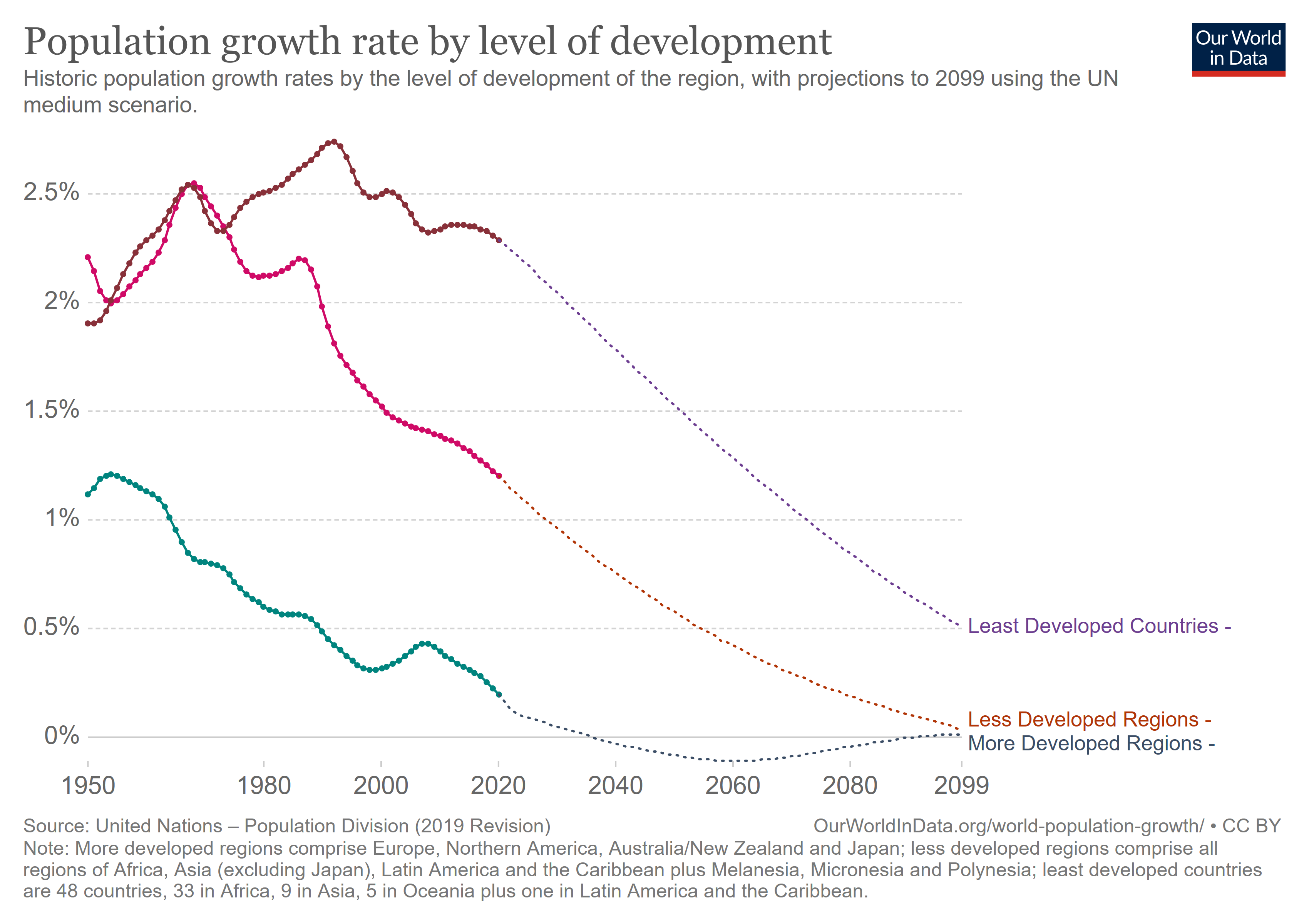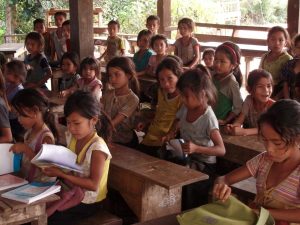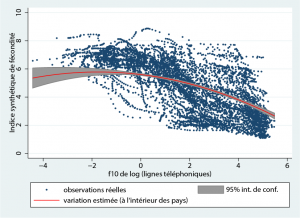


Writing the History of Our Laws
16 March 2021
Defending Humanity by Protecting its Heritage
16 March 2021A Virtuous Circle
by Angela Greulich, OSC

© Pixabay
Studying the demographic transition in developing countries calls for a long-term perspective. Taking into account intergenerational dynamics, as well as the evolution of technical progress, enables identification of the drivers of increased female education, which has multiple positive consequences, both individual and collective.
What are the driving forces of this virtuous circle? How are they transmitted and what are their effects in the middle and long run? These are the questions addressed in a recently published article by Angela Greulich, researcher at the Observatoire sociologique du changement, Nguyen Thang Dao (Osaka University) and Julio Dávila (Nazarbayev University & Université Paris 1 Panthéon Sorbonne).
A Process of Growth Throughout Existence
In this research, we theoretically and empirically study the consequences of the narrowing gender gap and education gap in emerging and developing countries. We take into account the role of technological advances in the demographic transition and economic growth. We do so by developing a model in the tradition of the unified growth theory that captures the process of growth throughout human existence.

Source : United Nations, Department of Economic and Social Affairs, Population Division (2019). World Population Prospects: The 2019 Revision, DVD Edition.
By empirically mobilising data spanning the end of the 20th to the beginning of the 21st century, we confirm the hypotheses of this model. We thus complete existing research on the demographic transition in the 19th century in the West, where we observed a transition from a high fertility and mortality regime to a low fertility and mortality regime. Compared to the demographic transition observed in the West, the demographic transition in Asia, North Africa and Latin America took place a century later, with lower levels of GDP per capita but a faster decline in fertility.
To explain the demographic transition of emerging and developing countries, our approach focuses on technological progress, in particular the innovation and diffusion of time-saving home appliances.
Phenomena Spread Over Time
To understand the crucial role of technological innovations on fertility and on human capital formation (skills, abilities and talents of workers) in emerging and developing countries, three consecutive mechanisms must be distinguished:
—First, the distribution of household appliances enables a reduction in domestic work time and frees up time for women. Women can then devote more time to the education of children. In the countries we have studied(1)South Africa, Algeria, Argentina, Bangladesh, Belize, Benin, Bolivia, Botswana, Brazil, Burundi, Cameroon, Chile, China, Colombia, Costa Rica, Ivory Coast, Cuba, Ecuador, Egypt, Gambia, Ghana, Guatemala, Honduras, India, Indonesia, Islamic Republic of Iran, Iraq, Jamaica, Kenya, Liberia, Malawi, Mali, Mauritania, Morocco, Nepal, Nicaragua, Niger, Pakistan, Papua New Guinea, Paraguay, Peru, Philippines, United Arab Republic, Central African Republic, Democratic Republic of Congo, Rwanda, Salvador, Senegal, Sierra Leone, Sri Lanka, Sudan, Thailand, Togo, Tunisia, Turkey, Uruguay, Zambia, Zimbabwe., this additional free time initially leads to an increase in fertility, but also to an increase in the participation of a first generation of women in the formal labor market.

© Pixnio
—Second, the higher female labor force participation encourages parents to invest more in the education of their daughters (second generation). The higher expected return of education (higher female wages) thus increases their daughters’ years of schooling. This improves gender equality in education and increases the ‘opportunity cost’(2)In a situation where one is faced with several choices, the opportunity cost of a given choice is the best gain that can be obtained by choosing one of the other choices. of child rearing (the implicit wage loss of staying at home to look after children). This increasing cost then leads to a decrease in fertility.
—Finally, narrowing the gender gap in education through increased investment in female education increases average human capital, which in turn stimulates technological progress (the third and subsequent generations). This positive loop results in the transition to a lower fertility regime and accelerated economic growth.
The Role of Technological Progress
In order to empirically estimate the effect of the diffusion of time-saving home appliances on fertility in less developed countries, we use the logarithm of the density of telephone subscriptions (number of fixed and mobile telephone lines per 100 inhabitants). The advantage of using a logarithm is that it captures proportional rather than linear changes. A 10-year forward gap is applied (i.e. telephone density is observed 10 years later than fertility), as telephone lines were diffused later than time-saving home appliances such as refrigerators, washing machines, kitchens, ovens, electric irons, vacuum cleaners, etc.)
In order to model this relationship, we used a regression model with country-specific and year-specific effects (fixed-effects model). This type of model makes it possible to control for country-specific variables that are constant over time, and to capture the influence of global trends over time. A series of control variables (GDP per capita, population density, exports, child mortality) make it possible to distinguish the role of technical progress from that of other forms of progress: economic, social and institutional. It should be noted that results are robust when using other measures of technology diffusion, such as the percentage of the population with access to electricity or ownership of a refrigerator.
The curve in the figure below illustrates the estimated within-country variation (red line) between the total fertility rate (TFR) and the density of telephone subscriptions, and contrasts it with real observations (blue dots).
Fertility and density of telephone subscriptions, 1960–2015 – 148 countries

Données : World Bank World Development Indicators, 148 pays, 1960–2015 (N = 5592). La marge d’erreur du modèle estimé est en gris. Crédits : Angela Greulich
The curve is concave: at low levels of technology diffusion (left side of the figure), greater diffusion of technology pairs with greater total fertility rates, while at higher levels of technology diffusion (right side of the figure), total fertility rates decrease as technology diffusion increases. The graph also shows that the correlation between fertility and technology diffusion is predominantly negative, with the shift in the correlation occurring at a relatively low level of technology diffusion.

Lessive à la main, Sénégal © Jean-Paul Gaillard, CC BY-NC-ND 2.0 via Flickr
The Crucial Role of Female Education for Economic Growth
Thus, the role of technological progress and its consequences on the education of women is clearly part of the underlying mechanisms of the accelerated demographic transition that can be observed in many developing and emerging countries. This study highlights the crucial role of female education in economic growth. Technological progress can potentially increase female labor market participation, not only by freeing women’s time from housework due to the appearance of time-saving household products, but also by leading households to reduce fertility. The driver here is an increase in the return of female human capital, which increases the opportunity cost of children. Increased investment in women’s education in turn accelerates technological progress, creating a virtuous circle able to trigger sustained economic growth.
Angela Greulich joined the OSC as Professor of Population Studies in 2019 after serving as Associate Professor in Economics at Université Paris 1 Panthéon Sorbonne (Centre d'économie de la Sorbonne). She has worked on several projects led by INED and the Paris School of Economics. Her work covers economic, demographic and sociological aspects. She is particularly interested in demographic and economic phenomena related to women: fertility, labor market participation and education.
Notes
| ↑1 | South Africa, Algeria, Argentina, Bangladesh, Belize, Benin, Bolivia, Botswana, Brazil, Burundi, Cameroon, Chile, China, Colombia, Costa Rica, Ivory Coast, Cuba, Ecuador, Egypt, Gambia, Ghana, Guatemala, Honduras, India, Indonesia, Islamic Republic of Iran, Iraq, Jamaica, Kenya, Liberia, Malawi, Mali, Mauritania, Morocco, Nepal, Nicaragua, Niger, Pakistan, Papua New Guinea, Paraguay, Peru, Philippines, United Arab Republic, Central African Republic, Democratic Republic of Congo, Rwanda, Salvador, Senegal, Sierra Leone, Sri Lanka, Sudan, Thailand, Togo, Tunisia, Turkey, Uruguay, Zambia, Zimbabwe. |
|---|---|
| ↑2 | In a situation where one is faced with several choices, the opportunity cost of a given choice is the best gain that can be obtained by choosing one of the other choices. |




